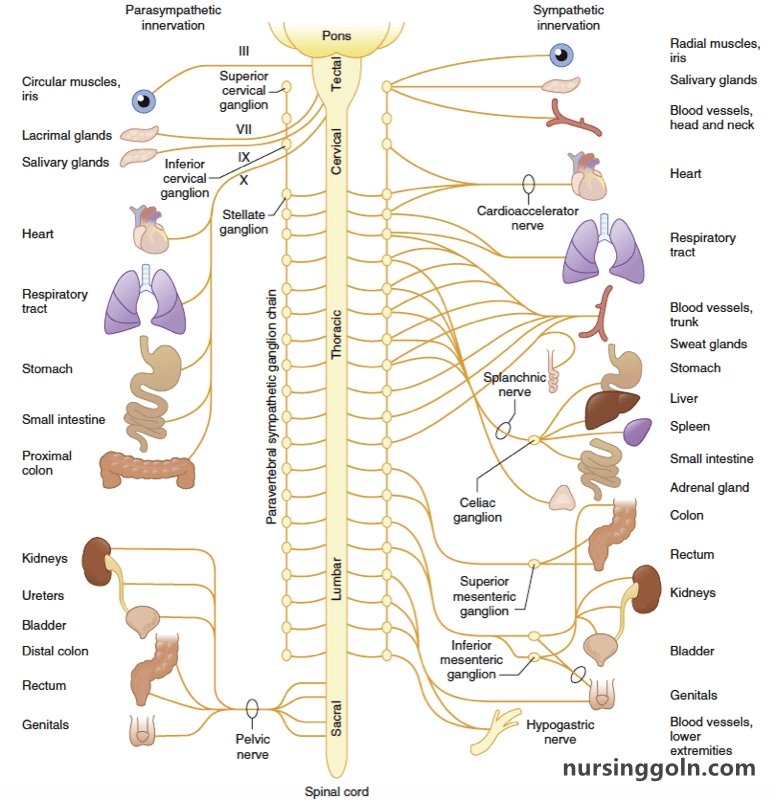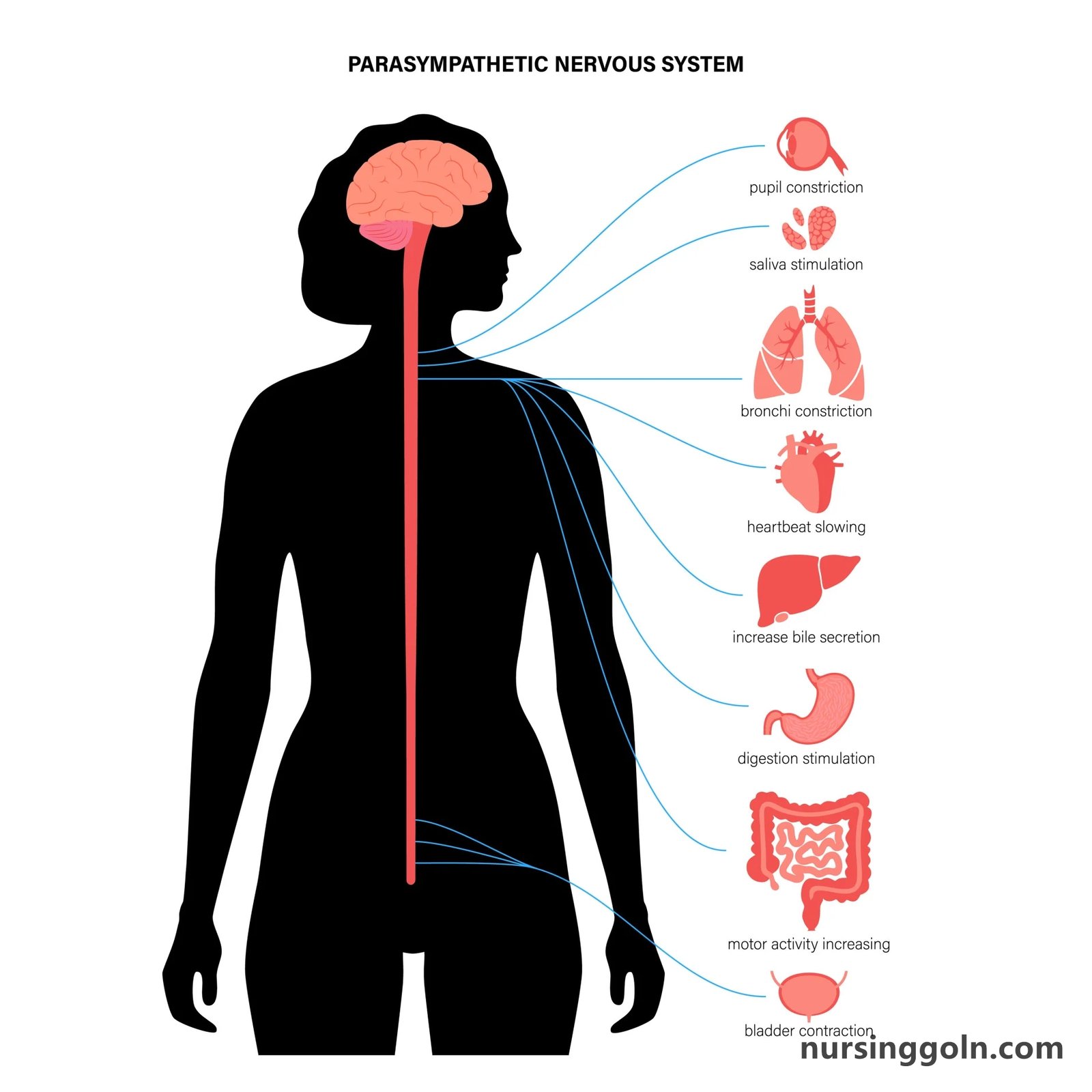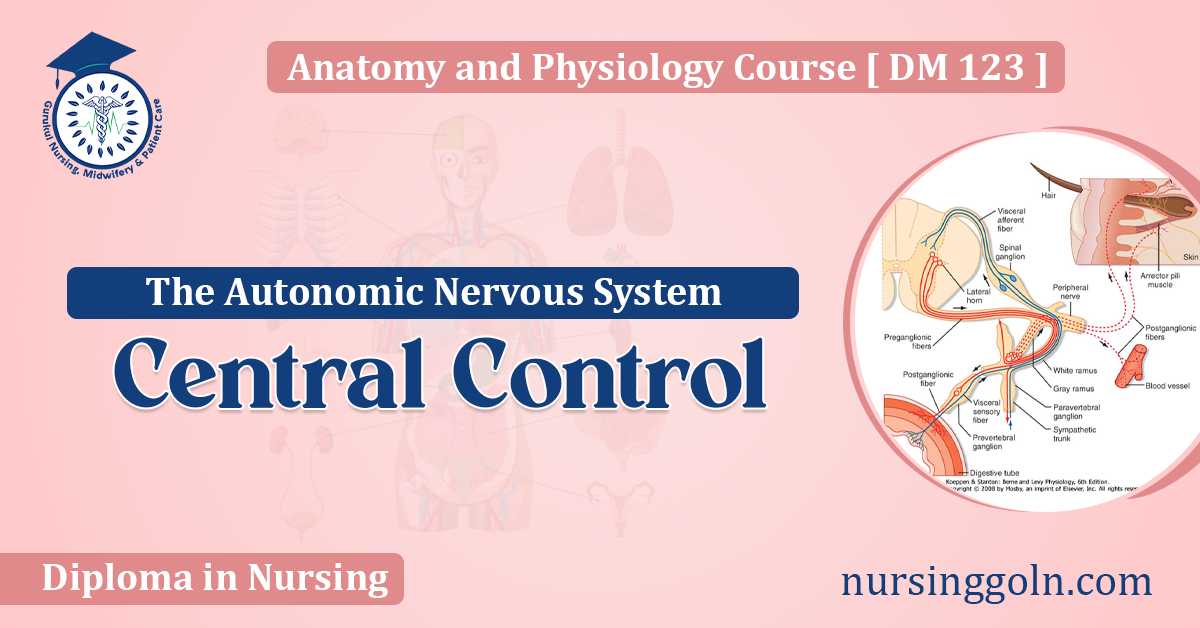Today our topic of discussion is ” Central Control “. In the intricate matrix of the human nervous system, the central nervous system (CNS) emerges as the paramount orchestrator. Particularly in regulating the autonomic nervous system (ANS), the CNS acts as a “control center,” ensuring the body’s internal milieu remains in perfect harmony. This article delves deep into the concept of central control, explicating how the brain and spinal cord guide the symphony of the ANS.

Central Control: The Autonomic Nervous System
1. Setting the Stage: The ANS and Its Divisions
The ANS, as a subdivision of the peripheral nervous system, is instrumental in governing involuntary bodily functions, such as heartbeat, digestion, and respiratory rate. This system is further categorized into:
- Sympathetic Nervous System (SNS): The body’s “fight or flight” mechanism.
- Parasympathetic Nervous System (PNS): The “rest and digest” counterpart.
2. The CNS: Brain and Spinal Cord
The CNS is composed of the brain and spinal cord, acting as the primary command and control hub of the entire nervous system, including the ANS.
3. The Hypothalamus: The Master Regulator
The hypothalamus, located within the brain, is often considered the chief director of the ANS. It integrates sensory input and orchestrates autonomic, endocrine, and behavioral responses to maintain homeostasis.
- Temperature Regulation: The hypothalamus receives information about body temperature and sends commands to adjust accordingly.
- Appetite and Thirst: It governs hunger and thirst based on nutrient and water levels.
- Circadian Rhythms: It influence sleep-wake cycles by controlling the pineal gland’s melatonin production.

4. The Brainstem: The Relay Point
Below the hypothalamus lies the brainstem, comprising the midbrain, pons, and medulla oblongata. It plays a pivotal role in autonomic regulation:
- Cardiorespiratory Center: Located in the medulla, it adjusts heart rate and breathing patterns.
- Pupillary and Gaze Control: The midbrain governs pupil size and certain eye movements.
5. Spinal Cord: Reflexive Responses
While the brain houses higher-order control centers, the spinal cord mediates several autonomic reflexes. For instance, the defecation and micturition reflexes are modulated by spinal cord pathways, although they can be influenced by higher brain centers.

6. The Limbic System: Emotion and Autonomic Response
The limbic system, the brain’s emotional center, has intricate connections with the ANS. Emotional stimuli can provoke autonomic reactions—like blushing in embarrassment or a racing heart when anxious.
7. Feedback Mechanisms: Maintaining Balance
Central control operates via feedback loops. For instance, when blood pressure drops, the brain detects this change and sends commands to elevate it. Once achieved, feedback to the brain halts this command, ensuring stability.
8. Interplay Between Sympathetic and Parasympathetic Systems
Central control ensures a balance between the SNS and PNS, with the hypothalamus acting as the mediator. Depending on situational needs, the hypothalamus can activate one system while suppressing the other.
9. Pathologies and Central Control
Impaired central control can lead to autonomic disorders:
- Horner’s Syndrome: Disruption in the sympathetic pathway can cause ptosis (drooping eyelid), miosis (constricted pupil), and anhidrosis (lack of sweating).
- Neurodegenerative Diseases: Conditions like Parkinson’s disease can affect autonomic functions due to CNS involvement.

10. Future Directions: Modulating Central Control
Recent research focuses on potential therapeutic interventions to modulate central control:
- Deep Brain Stimulation: Electrodes implanted in the brain can adjust neuronal activity, offering therapeutic benefits for disorders like Parkinson’s.
- Neurofeedback: By training individuals to control brainwave patterns, certain autonomic functions may be better regulated.
11. Conclusion: The Elegance of Central Control
The beauty of the human body lies in its seamless integration, where myriad functions occur simultaneously without conscious thought. Central control stands as a testament to this elegance, where the CNS meticulously guides the ANS, ensuring harmony and survival. As we continue to uncover its nuances, we move closer to harnessing its potential, paving the way for groundbreaking medical interventions.
Read more:
